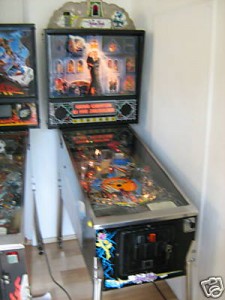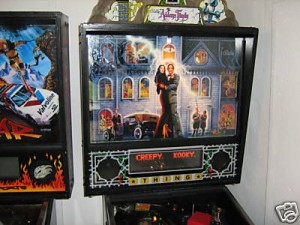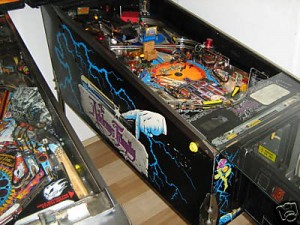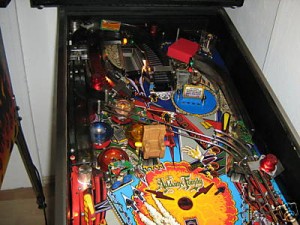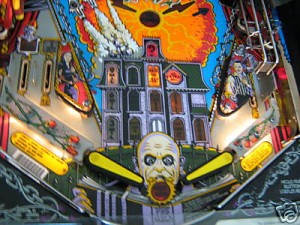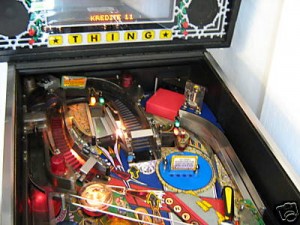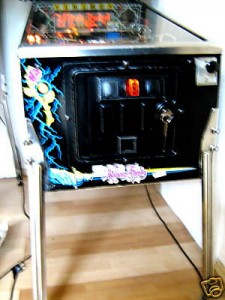The problems start…
Saturday, October 4th, 2008The only problem I had was with the “Extra Ball” lamp (bulb 12): because of the right flipper assembly (which almost covers the hole for the Extra Ball insert), I couldn’t get the bulb to illuminate the insert uniformly. This is something I’ll have to address later.
Also, it was interesting to note that in testing the flashers an interesting anomoly became evident: whenever one of the flasher circuits had a bulb which wasn’t working, at least one of the flashers in an adjacent circuit flashed in sympathy, but not at full brightness, in a kind of “cross-talk” way. Strange, but true. I’m not sure if this is a problem with the power board, or the wiring or something else, so it’ll be something else to put on the back burner for later.
Incidentally another issue I identified whilst testing the flashers was that how difficult it was to get to the train-wreck, mini-flipper and telephone flashers. Unlike all other flasher caps these three caps were rivetted to their plastic, meaning that the plastic has to be removed to get at the bulb. A difficult and cumbersome task – especially for the the telephone flasher. I have no idea and can see no reason why these couldn’t be converted to a base with a screw in flasher cap for easier replacement. So I’ll take this as a future project also.
Finally in going through the switch test, I found something really odd: whenever I operate the Left Outlane Switch, the Thing Opto Up switch turns off also (it’s normally on). These two switches are adjacent to one another in the switch matrix and share the same row. This is something I’ll need to investigate in the near term (although it doesn’t appear to affect the play of the pinball).
Unfortunately though, my problems didn’t stop there…
